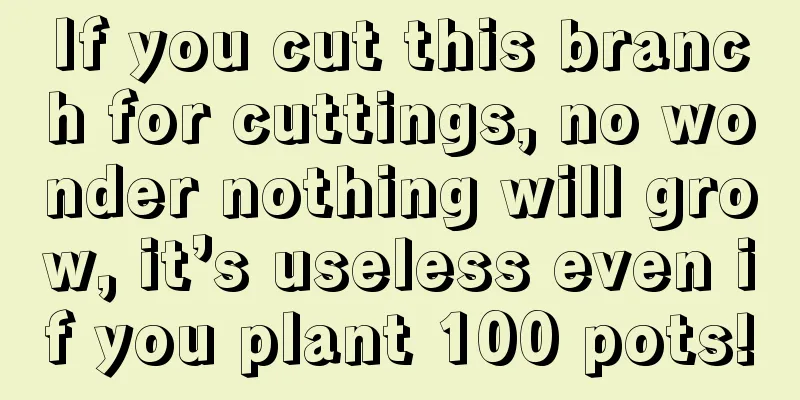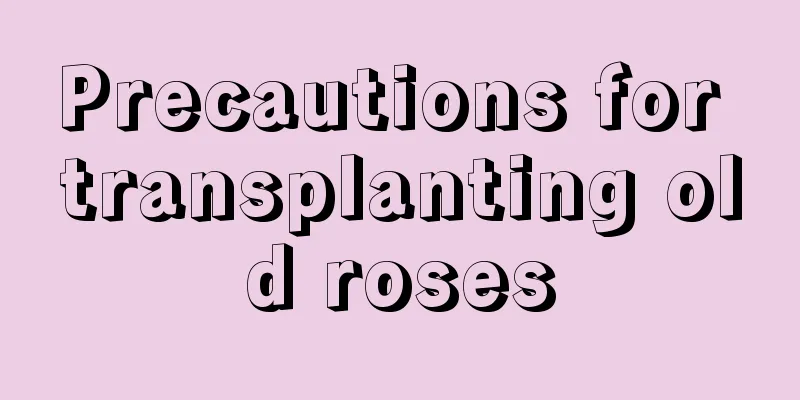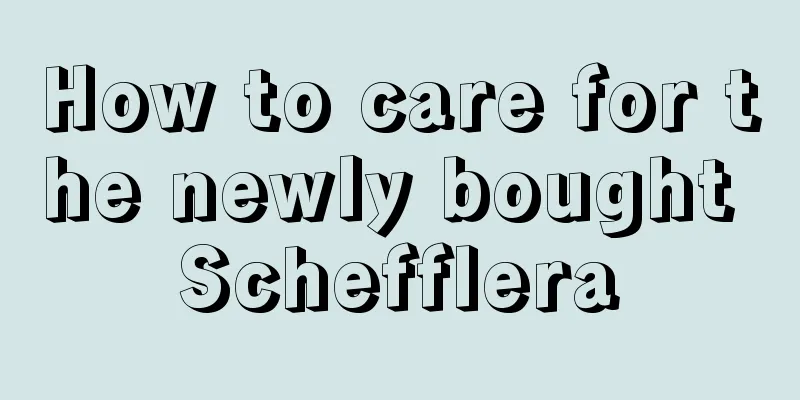If you cut this branch for cuttings, no wonder nothing will grow, it’s useless even if you plant 100 pots!

Choose the right branches for cuttingsCuttings are not just cutting a piece of flower branch at random. As long as we choose the right flower branch, the cuttings can take root faster and the seedlings will be stronger. 1. Choose one-year-old, strong branches Take roses as an example. It is best to cut green branches with many buds, and avoid old and woody branches. If you see spots on it, it is best not to use it. It may be diseased and the risk of cutting is high. 2. Length is 8-15 cm, with 2-3 buds There is no special requirement for the length of the cut branches. Some flowers are relatively small, such as geraniums, sunflowers, etc., and 6 cm can be used for cuttings. Roses, bougainvilleas, etc. can be longer, with at least 2 buds. Cutting medium and depth1. Use sandy, breathable soil It is best to use sandy soil, perlite, and cinder soil for cuttings. These soils are more moisturizing and breathable, which is conducive to the respiration of branches and trunks. 2. It is best to use a transparent plastic cup It is best for beginners to use transparent plastic cups for cuttings, so that it is easier to observe whether there is too much water, rot, or rooting. Do not move the inserted branches, and do not pull them out to take a look out of curiosity. Use a small transparent cup to do the cuttings, and you will be able to see when they have grown roots! 3. Depth of cuttings The depth of cuttings is 2-5cm, depending on the variety of flowers. Do not cut too deep as they are prone to rot. The lowest bud on the branch should not be inserted into the soil, but should be left on the soil surface. Maintenance after cutting1. Environment and lighting The branches and trunks after cuttings should not be exposed to direct sunlight. They should be placed in a cool place in summer. In spring and autumn, they can be exposed to sunlight in the morning and evening, but they should also avoid direct sunlight at noon. After about 12-15 days, when the roots are stable, you can expose it to the sun or place it in a well-lit place at home. 2. Watering Either moisten the soil before cutting, just make it slightly damp, or water it thoroughly immediately after cutting. Keep the soil moist at all times. Don't overwater, or the roots will rot. A few small issues about cuttings1. Cuttings and false live Some branches start to sprout and grow leaves not long after being cut. Don't be too happy too soon, as it is very likely that they are not growing. That is, all the original nutrients are supplied to the buds, and the roots are no longer able to function. How to judge: If the old leaves on the branches wither before the buds appear, then it is fine; if the old leaves are still good and the buds have grown, it is probably a fake. What to do if it's not alive: Don't touch it. If you want to save it, remove the new shoots to retain the nutrients and see if it can grow roots again. Or just leave it to fate and wait for it to die. 2. Repotting after cuttings take root Generally, after the cuttings take root, the seedlings will continue to grow leaves. After it grows 3-5 leaves, it will stop growing. This is a normal root accumulation phenomenon. Do not move it. This process lasts for half a month before considering changing the pot. When repotting, be sure to take the soil with you and do not remove the soil on the roots. This will not only protect the new roots, but also help the plant adapt to the new pot as soon as possible after repotting. After repotting, water thoroughly and place it indoors to avoid direct sunlight. After about 2-3 days, it can be exposed to sunlight in the morning and evening. After half a month, it can be maintained normally. These little tips on cuttings Have you learned all? Save it Save it for later. |
<<: Cultivation Techniques of Gardenia jasminoides
Recommend
The lilies in his house grow 100 flowers each, and the yard is covered with pennywort as a lawn. What a rich man!
A bunch of lilies blooming At first, someone told...
Cultivation methods and precautions of goat milk flower
1. Soil It is best to choose sandy loam for the n...
When is the best time to prune elm trees?
Elm tree pruning Pruning elm trees can save nutri...
What is vanilla?
1. What is Vanilla does not refer to a single pla...
The reason why the leaves of black magic are too long
1. In dormancy Reason: In summer and winter, due ...
Camellia's requirements for light and soil
1. Requirements for lighting It is a light-loving...
Who can I give carnations to?
1. Flower Language 1. White The white one represe...
Watering time for Kalanchoe, what to do if leaves turn yellow due to excessive watering
1. Watering time It is important to choose the ri...
Teach you step by step how to make a succulent bird cage!
Prepare the Materials 1. Bird cage (iron products...
When to plant okra in the south
1. When to plant Whether in the south or the nort...
Can pepper water be used to water flowers?
Can pepper water be used to water flowers? Pepper...
Precautions and operation methods for repotting Clivia
Things to note when repotting Clivia Clivia gener...
How to save seeds in Timothy
Where do Timothy seeds come from? Timothy, also k...
How to grow daylilies in spring
1. Watering In spring, daylilies' demand for ...
What kind of crop is litchi? What crop belt does it belong to?
What kind of crop is litchi? Litchi is a common f...









